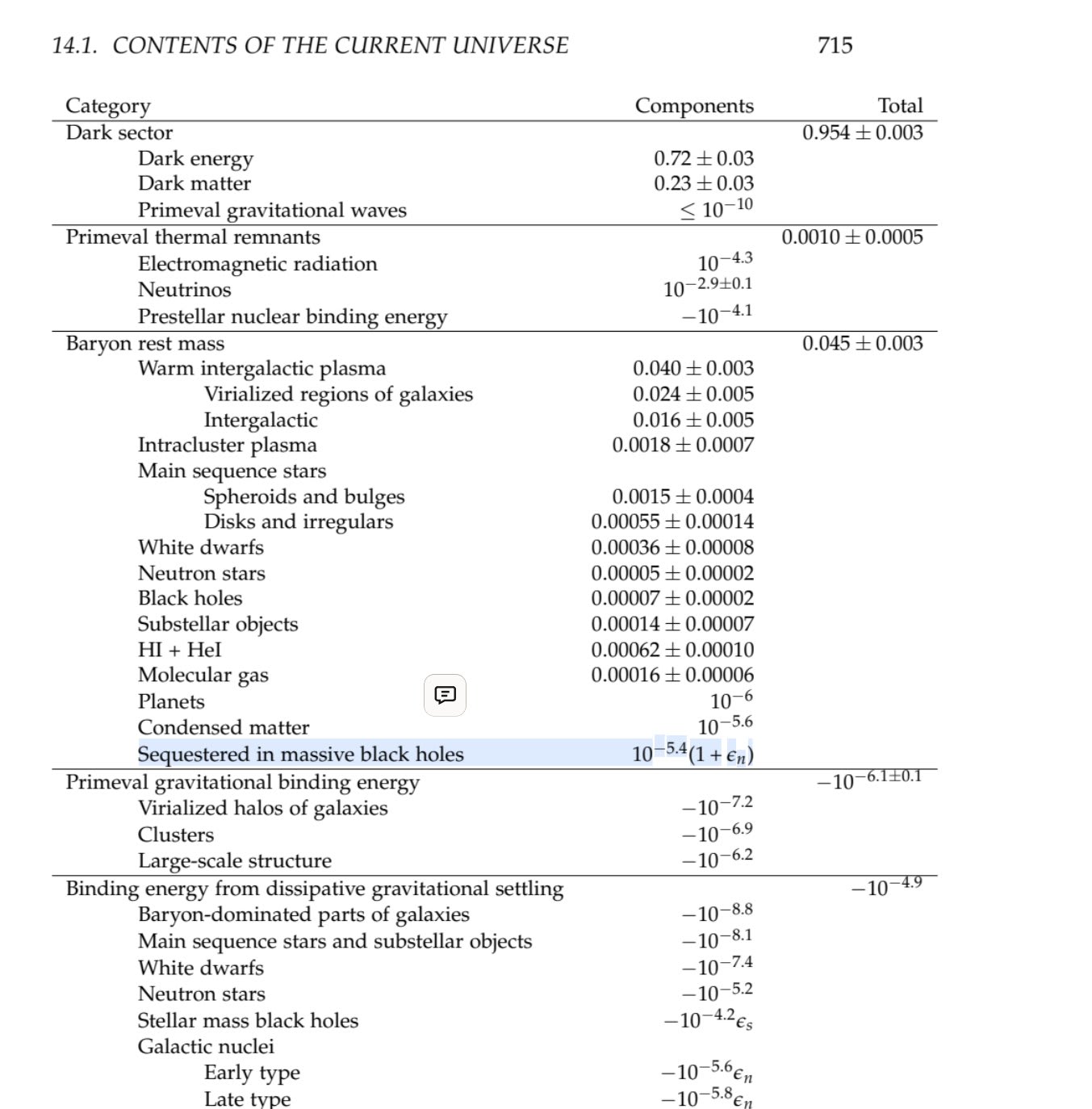Stars are a rounding error
23MichaelDickens
2Algon
11Gurkenglas
2Algon
2Gurkenglas
5Alex_Altair
2Algon
5Adele Lopez
4niplav
4Garrett Baker
8Mars_Will_Be_Ours
4Algon
4niplav
4Algon
2Garrett Baker
3Mike Johnson
2Charlie Steiner
1Dennis Towne
2Algon
New Comment
First, the obvious: baryonic matter itself is a rounding error
This is a minor comment but I think it would be useful to define terms like "baryonic matter". I'm much more well-versed in particle physics than the average person (I have taken one (1) class on particle physics, which I think puts me in a pretty high percentile on particle physics knowledge) but I don't remember what "baryonic matter" means. It's also non-trivial to find out what it means: Wikipedia says a baryon is defined as having an odd number of valence quarks, but I have no intuition for what that means either.
From context, I think what you mean by "baryonic matter" is "matter that forms atoms", and you mean to exclude dark matter, black holes, and force-transmitter particles (photons etc.).
Yeah, that's fair. I assumed people would know for some reason, but TBH I mix up baryons and hadrons quite often, so it's not like I wouldn't have been confused, too.
The mass of a black hole is proportional to its radius, not to its volume like with rocks. So you can't make a two-dimensional mesh of black holes, only a one-dimensional mesh.
To capture dark energy aka the expansion of the universe, take some masses and let them expand apart, there's your potential energy. If you ever capture all of it, you can go collect the matter that has stopped expanding away from you.
Turing completeness, let alone error correction, has not been shown for leptonic matter on its own.
Curious if you have a citation for this!
Anders make this claim in his book draft, with some arguments against stable leptonic structures, which you might think precludes them as a substrate for computations. But it's hard to prove that a thing can't be done. As for whether anyone else has proved it, I'm afraid I don't know.
Couldn't you use big black holes to suck up dark matter, and then harvest energy/momentum from those? Even if the large size is not ideal for the next step of conversion, making the dark matter capture even marginally easier seems like the more important consideration given the ratios involved.
While reading that exact passage I had an idea which I don't think will pan out but nevertheless has some cool confluence: use black holes as shielding for intergalactic probes to scoop up the plasma.
On the subject of “capturing dark energy” (I don’t think this technically captures any energy previously existing), my favorite proposal is to connect distant galaxies together with strings, and use the resulting tension to turn a turbine. In principle your limit would then only be the strength and length of your intergalactic rope.
See Mining Energy in an Expanding Universe for what I think is the earliest proposal for this idea.
Another way of acquiring useful energy from dark energy is to place two objects extremely far away from each other and give them a velocity towards each other that is somewhat less than their recessional "velocity". The two objects will initially be transported away from each other because dark energy is creating new spacetime between them even though relative to spacetime they are moving towards each other. Then, mutual gravitational acceleration gradually increases the velocity of these two objects. The velocity of the two objects towards each other eventually overwhelms the creation of new space by dark energy. Thus, the objects return with a kinetic energy greater than what would be generated by the conversion of gravitational potential energy to kinetic energy alone.
Edit: Typos.
Anders writes about this! p. 783-785 (809-811 in the raw PDF). Unfortunately, even with a carbyne chain ("presumably close to the ultimate limits of molecular matter") checks "the lost mass-energy from extending the cable will be a factor 1.39×10⁹ larger than the work done by the cable"
Dark Energy seems pre-paradigmatic; it does appear we need some way to account for the blueshift of distant galaxies, but I'm hesitant to enshrine it as a 'type of stuff' and by implication the largest item on our ledger of future potential resources.
I'm a big fan of this sort of exploration about "what are the details of our cosmic endowment." Thanks for posting.
You can get half of the energy you dump in back out.
What do you mean by this exactly? Does the other half come out as particles? If so, why not just dump the particles back in until everything comes out as energy?
Good catch. I meant when you dump in mass energy into a black hole, it eventually radiates it back out and about half of that radiation is stuff we can make use of: light, electrons, positrons, protons, neutrons etc. The other half is neutrinos.


